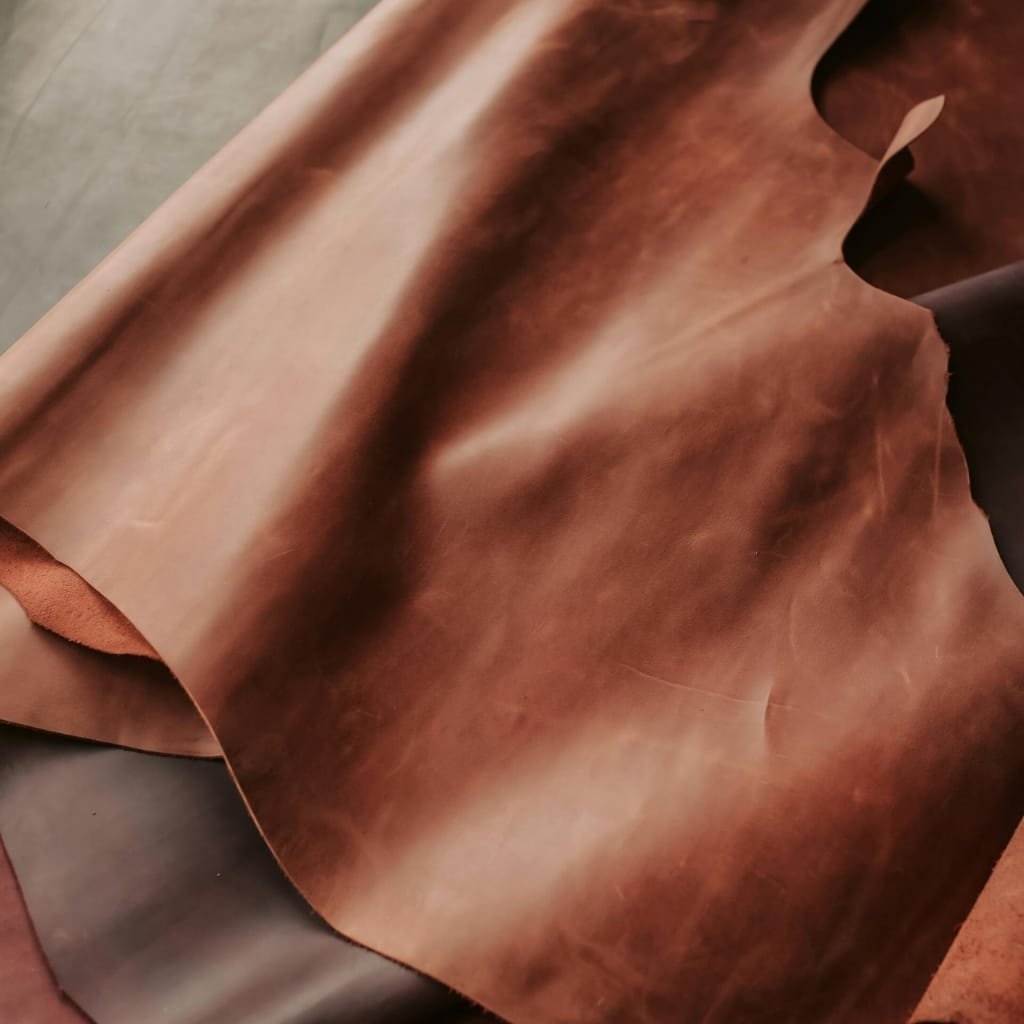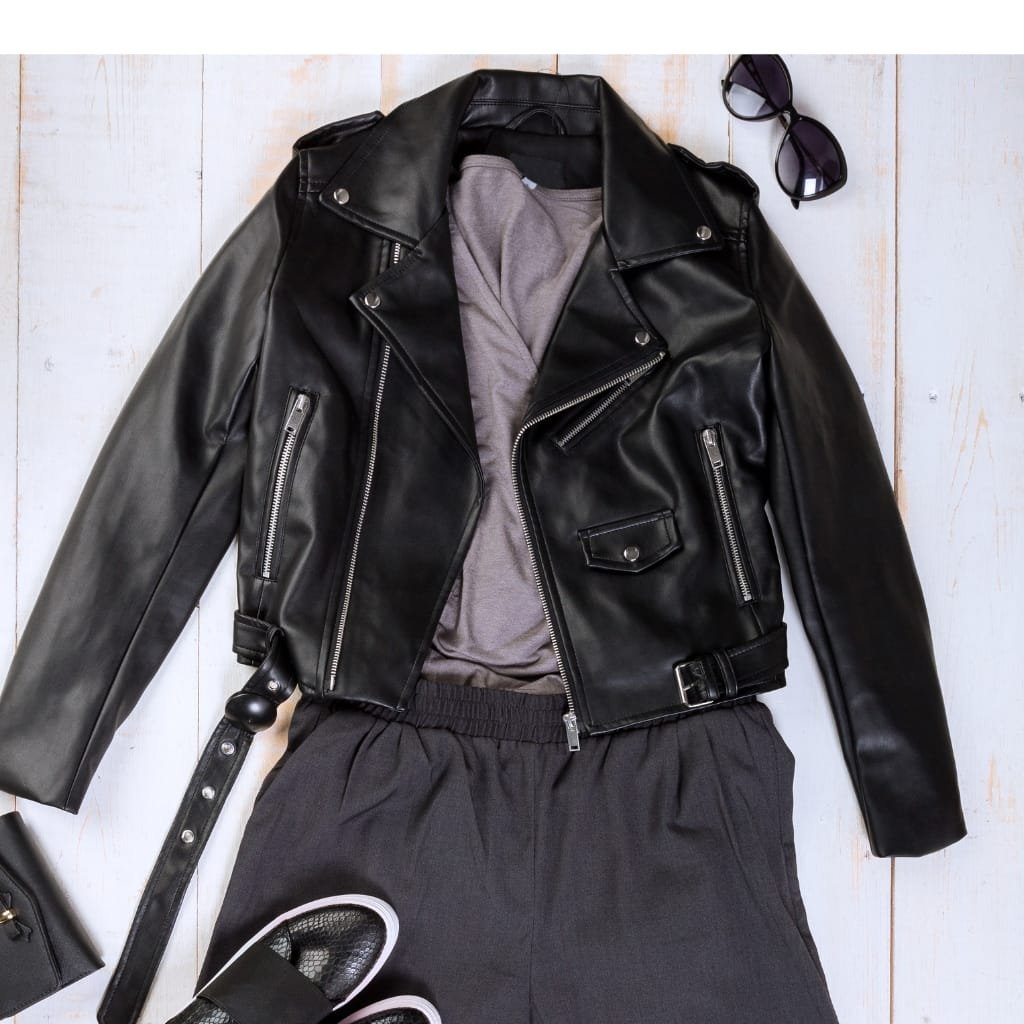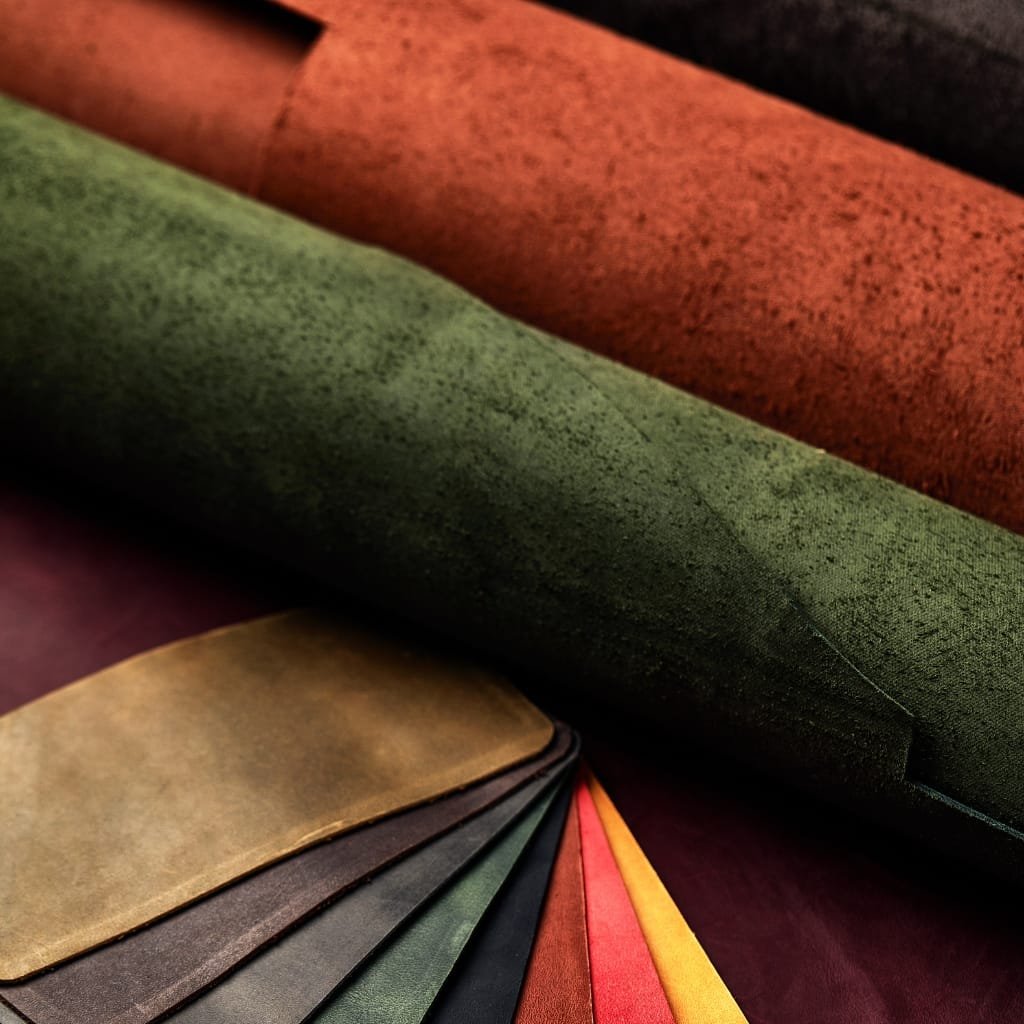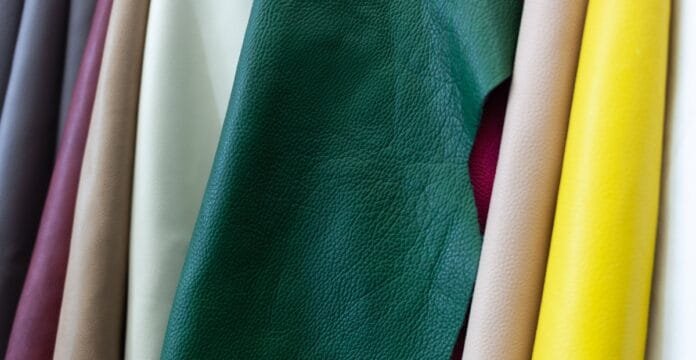Used for everything from jackets to sofas, cow’s leather is one of the most durable and versatile materials in the world. It’s important to understand the types of cow’s leather to make the right purchase. Whether you’re buying a leather jacket, designing a collection of luxury bags, or crafting furniture, the type of leather makes all the difference.
A cow’s leather product is not a uniform piece made solely from one hide. Different layers of the hide offer different textures, strengths, and aesthetics. Thus, each can be a determinant of the product’s quality, price, and performance.
Full Grain Leather: The Gold Standard of Cowhide
The strongest and most authentic type of cow’s leather is full grain leather. It’s the strongest and most authentic cow leather. Full grain leather is created from the hide’s topmost layer and grain is the most important factor. The grain’s natural markings and imperfections are not removed, which gives full grain leather a rugged character and attractive patina as it ages.
Full grain leather hasn’t been sanded or buffed, which makes it durable. It is often used in high-end furniture, premium bags, belts, and boots. Because of its unrefined nature and remarkable aesthetics, full grain leather is more pricey.
In addition, full grain leather strongly protects against moisture when compared to other processed leathers. With regular conditioning, its longevity is unmatched and can last for decades. People often choose this type for heirloom-quality products that age beautifully.

Top Grain Leather: Smooth, Stylish, and Durable
Just below full grain, we find top grain leather. Sometimes, it is also referred to full grain leather; however, it comes from the top layer of the hide and is lightly sanded and buffed to remove surface imperfections. As a result, it becomes more uniform in appearance and smoother to the touch.
Although it sacrifices a bit of strength compared to full grain, top grain leather still holds up extremely well over time. This type of leather is commonly used in fashion items such as jackets, wallets, and handbags. Its more polished finish and flexibility make it a favorite in modern styling.
Top grain leather can also undergo processes and can be dyed in different colours and textures. Thus, for the fashion conscious who want style and dependable performance, this leather hits the sweet spot.

Corrected Grain Leather: Treated for a Uniform Look
The term corrected grain leather or embossed leather refers to leather fabricated from hides which possess some flaws. These defects are taken care of through sanding and a synthetic grain is put on top. This grain can be stamped to imitate the natural one.
Although this leather does not age or develop a patina like finer types do, it does have a clean and consistent appearance. Corrected grain is common in mass manufactured items such as office chairs and car interiors. This leather is also dyed and treated with protective layers, which makes it easy to clean and resistant to stains.
Due to the treatment, this leather is less breathable. Even so, the lower price and the look make it popular. For appearance and cost, corrected grain is a good compromise.

Split Leather: Lower Layers, Lower Cost
Split leather refers to the leather derived from lower layers of the hide after the upper layer has been removed. It does not have the grain and texture of full or top grain leather. This is typically makes it less durable and more susceptible to damage.
Manufacturers usually enhance its appearance by applying a layer of polyurethane and embossing it with a synthetic grain pattern. This form is referred to as bicast leather or PU leather. While it is shiny and uniform, it is far less flexible and breathable.
Spent leather is most commonly utilized for low to mid-range furniture, as well as for various other accessories and even for book covers. This is not suitable for high-wear products, but serves well with less-used or decorative items.

Genuine Leather: Misleading but Real
The phrase “genuine leather” is often erroneously used and is a marketing phrase. Ironically, it is used for lower-quality leather products, most often a split leather or corrected grain. It is, however, a cowhide product, although it is split, heavily treated, and processed.
While it may look average at best initially, it does not age well as “full” or top grain does. It may, however, crack, peel, or fade after a while, and mask a plethora of imperfections. Regardless, due to its low price, it is heavily favored in market mass accessories and entry-level leather products.
Genuine leather is quite appealing to buyers with tight budgets, but helps understand the product provides helps knowing what to expect.

Suede and Nubuck: Texture and Appearance
Suede is a soft, velvety material often used for clothing and accessories such as shoes, jackets, and gloves. Although less durable than top or full grain leather, it is quite rugged for a soft material.
Nubuck is slightly stronger and more durable than suede. It is more expensive as well. Nubuck leather is softer than other types of leather because it is made from the outer layer of the hide, but it is buffed on the grain side.
Both types of leather are soft and silky to the touch, but they are more difficult to maintain due to a higher tendency to stain. Suede and nubuck should be treated and protected with specially made sprays and gentle cleaning techniques.
Embossed and Coated Leathers: Functionality and Texture
Some leather types from cattle are specifically used for making coats, which may be embellished with embossing techniques for more of an exotic crocodile or ostrich look. Coated leather is applied for aesthetic purposes or for increased water resistance, particularly for outdoor coats.
Although these leather types do not have their own classification, it is worthwhile to mention them as they are often used for trendy outerwear and fashion accessories. High fashion items, although less breathable due to the coating, are more wearable and lower maintenance.
Thus when you desire a stylish item or require weather-resistant functionality, embossed leather or coated leather would be a perfect fit.
Suggested Care for Different Types of Leather
- Full & Top Grain: Apply conditioner once every few months. Protect from long sun exposure and standing water.
- Corrected & Genuine: Remove debris with a damp cloth. Do not use strong cleaning agents.
- Split & PU Leather: Avoid excessive bending while cleaning and handle with care.
- Suede & Nubuck: Comb rutina, spray care products to protect, avoid drinking water.
No matter the grade, products made of cowhide benefit from good care.
Conclusion
Choosing leather is not only about fashion; it’s deeper than that. The types of cow’s leather differ in strengths and weaknesses. Full grain has the best strength and durability over time, while suede is soft and trendy. Whether you seek robust leather for rugged work or sleek leather for ostentatious fashion, there is something for everyone.
Understanding the layers and the processes each leather goes through lets you buy wisely and appreciate the leather work. The next time you are shopping, remember, it is the knowledge of the leather that provides the best choices.
FAQs
What is the highest quality cow’s leather?
Full grain leather is the highest quality. It uses the strongest part of the hide and retains natural markings.
Is genuine leather better than top grain?
No. Genuine leather is a lower grade. Top grain is stronger, more durable, and ages better.
What’s the difference between suede and nubuck?
Suede comes from the inner hide and is softer but less durable. Nubuck is buffed from the outer hide and lasts longer.



